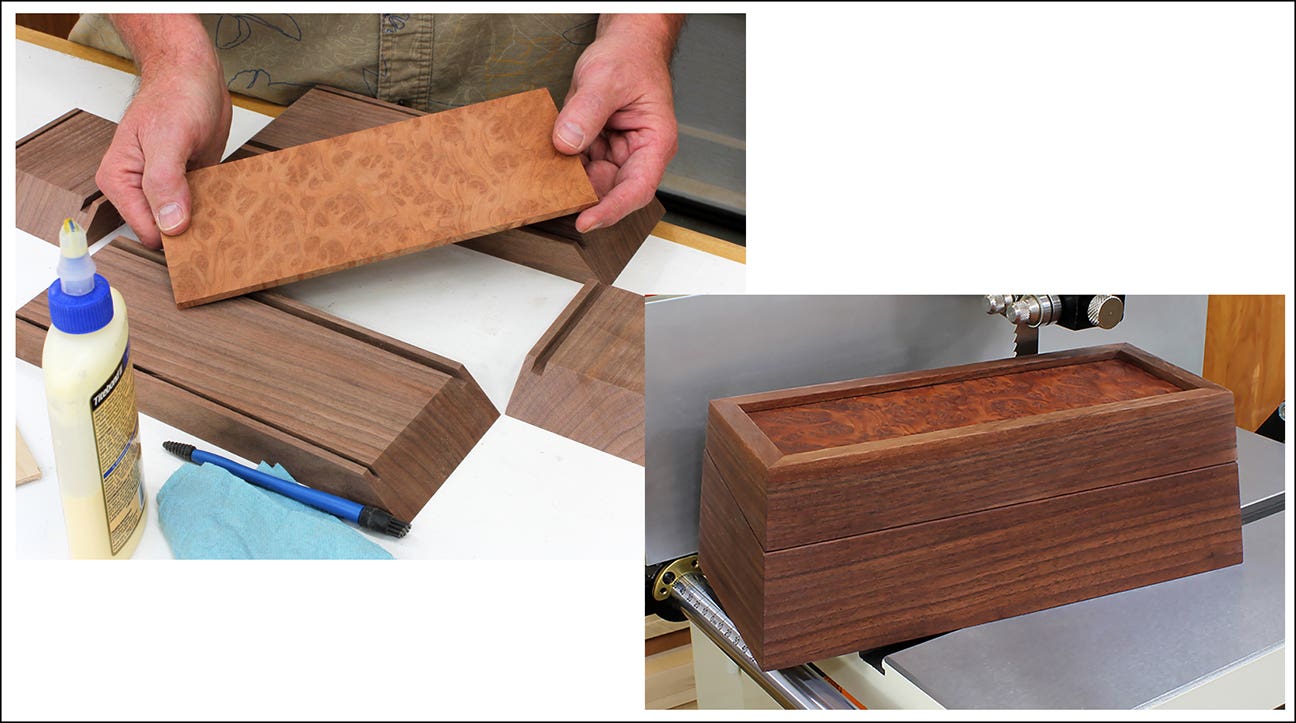Age should just be a number for woodworkers
It’s unfortunate that society places such a huge emphasis on youth. Much like in the movie “Logan’s Run” (1976), where the government decided that its citizens could not live beyond…
It’s unfortunate that society places such a huge emphasis on youth. Much like in the movie “Logan’s Run” (1976), where the government decided that its citizens could not live beyond the age of 30, the youth obsession dominates advertising, pop culture and even shapes our opinion on when people should retire.
Rather than retiring when our career is complete, we are brainwashed into thinking that it should occur at a predetermined age or, worse yet, when we have enough money to sustain ourselves without working. People live longer and healthier when they have a purpose. When that purpose is taken away, the will to live dies with it.
A human resource study conducted by the Shell Oil Co. discovered people who retire at age 55 are 89 percent more likely to die in the 10 years after retirement than those who retire at 65. Getting old does not create a negative energy, but a bad attitude about the aging process does.
Younger people typically have more to live for and not just because they have more years ahead of themselves. It’s because they still have to prove themselves both on the job and for their own self-worth. For the older craftsperson dealing with the “societal norms” about aging, they often wind down when they are really entering their peak. This is the time to soar.
Even if you are firmly established in a career and are not ready to retire, this negative aging indoctrination can act like a cancer, dulling your drive through a resting-on-your-laurels mindset of achievement. That’s the equivalent of laying down your sword in the middle of a battle. Life is a battle, regardless of whether you’re retired or working. Therefore, if you take off your armor when you quit a routine of working, you’re vulnerable to attack both physically and mentally.
Like fine wine
If we take a look at the reasons wine can get better as Father Time passes, we’ll better understand the fine art of the aging process. Young wines might smell like ripe berries, but their taste is often tart and bitter (such as a greenhorn in a new profession). On the flip side, aged wines will smell more earthy, but leave your palette feeling fuzzy and warm. Why is this? A dumbed-down layman’s explanation tells us there is a chemical process that takes time to develop. You could liken it to eating a green banana; not only has the flavor not been fully developed, it leaves a dry chalky taste in your mouth.
The art of craftsmanship develops in much the same way. Straight out of an apprenticeship or schooling, a novice craftsman might have the title, but has not yet earned his or her place in the pecking order. Although some are born with a special gift to create, experience (time) is still one of the most important aspects to a craftsperson or artist’s development. It simply takes time to figure out the relationship both with the material that is plied in your trade and how your hands process that material.
The benefits of aging
No one seems to like the process of aging. But, again, I think that attitude has been developed merely from the pressures of societal pedagogy. Aging is actually a very good thing because it’s natural. We are slowly learning the importance of using natural products over their artificial counterparts, so why does society fight the human aging process? Is plastic surgery for the sake of youthful appearance natural? Of course not.
Why is there such an obsession with youth? Look at it from a logical standpoint: it is typically the young that go to school, not the old. This is because young people do not yet have the experience needed to perform tasks for society. That’s not to say that simply being older is being wiser. That is only proven true when an elder person implements the vast experience they’ve gained along life’s journey. Society has fallen away from the natural order of things; we accentuate the fixation with youthful appearance (that has the “tart and bitter” taste) and yet neglect our older people (by degrading their purpose) who are the ones that hold the ability to create a “warm and fuzzy” taste to the palette of life.
Better with age
Being an older craftsman or artist is a blessing. Even though the work is hard, often underappreciated and underpaid, it has a long shelf life.
Consider the career of an athlete. They typically reach a career prime in their mid-20s. These young professionals can make generational money, yet they still need to find a purpose for three-quarters of their life after their career has ended. Even though that might sound appealing, statistics show that many of these young millionaires either lose their hard-earned cash or travel down a road to depravity. Much like many lottery winners, Las Vegas would set the betting line against their success after having received such a large payoff in such a short time.
Even the more common corporate professions push employees into early retirement to bring up the next generation of lower-paid professionals. On the flip side, highly skilled occupations, especially those that require actual hands-on experience, get better with age. In fact, the trust factor of an older craftsman or artist is generally much greater than that of a younger contemporary.
Working with a specific material such as wood, glass or metal can take a lifetime to understand. Although the basics are taught in school and passed down to the apprentice, the tactile nature of craftwork requires years of working with the material before you really understand how it wants to be manipulated. This is why age rules in the trade environment. As long as the aged craftsman doesn’t get complacent, his position on the food chain will continually reside at the top.
Aging is a natural process. On the outside we shrink, get wrinkles and slow down. On the inside, however, our brain continues to collect information. In fact, the mere quantity of years in the trade should trump the less experienced hand.
There is a caveat to this, however. The obvious is health. Some things we have control over and some we don’t. Second is application. As you get older, are you continuing to grow as a craftsperson or are you content with the knowledge you have?
In order to grow you must constantly be feeding new information and challenges into your experience. If you’ve done all the right things, use your age to your advantage. Here are a few suggestions:
• Become the expert: This wisdom should be used to help your clients. Not only do you have more understanding about their needs, but also more skill to achieve the goal.
• Become a mentor: Share the wisdom with your younger peers. They represent the next generation.
• Become a better businessperson: Age should teach you how to better manage people.
There’s nothing wrong with never retiring. If you have the physical ability, the drive and, most importantly the desire, by all means pursue your goals. Colonel Sanders franchised Kentucky Fried Chicken when he was 65 years old, an age when most Americans are considering retirement. In fact, studies in Blue Zones (concentrated areas of the world where people live over 100) reveal part of the secret to longevity is staying active and having a purpose.
Your life encompasses every day that you take a breath, not just the ones from the moment of your first job to the day you retire. As craftspeople, you need to be like Logan in the movie, defy how society tells you to live and work. Live life fully your way.
This article originally appeared in the November 2015 issue.







